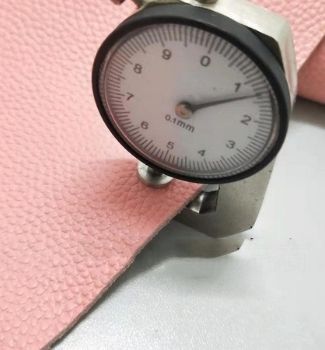Du möchtest ein neues DIY-Projekt mit Echtleder starten und bist dir unsicher, welches Leder sich wofür am Besten eignet? Wir haben drei Tipps für dich, die dir bei der Auswahl des richtigen Leders helfen!
Leder ist nicht gleich Leder
Das richtige Leder für ein Projekt auszuwählen ist einfach super schwer. Es gibt so viele verschiedene Möglichkeiten was Stärke, Härtegrad und Oberflächenbehandlung angeht, dass man leicht etwas unschlüssig werden kann.
Alle Faktoren wirken sich am Ende auf das Ergebnis aus, und deshalb sollte das richtige Leder für dein Projekt gut gewählt sein. Aber: wo anfangen?
1. LEDERSTÄRKE
Leder gibt es in vielen verschiedenen Stärken, oft von 1 mm bis 3,5 mm.
Eine Info können wir dir direkt mitgeben: Alles über 2 mm Dicke wird bei kleinen Projekten wie bspw. ein Lederetui nicht funktionieren. Wenn du zu dickes Leder wählst, trägt es an den Ecken so sehr auf, dass das Lederetui entweder nicht zusammenpassen wird, oder zumindest nicht mehr schön aussieht. Aber auch zu dünn sollte das Leder auf keinen Fall sein. Wir empfehlen dir, nicht unter 1 mm Dicke zu gehen.
2. HÄRTEGRAD
Auch der Härtegrad deines Leders hat einen großen Einfluss auf dein Projekt. Testen kannst du die Härte deines Leders, in dem du ein Lederstück an einem Ende festhältst und schaust, wie sehr sich das andere Ende des Leders nach unten neigt. Hat das Leder etwas Stand oder knickt es direkt ab?
Je weicher das Leder ist, desto stärker wird das Leder abknicken. Wir empfehlen dir einen mittleren Härtegrad, etwa so wie im oberen Bild hier. Der weichere Härtegrad wie im unteren Bild funktioniert auch noch, allerdings hat dein Projekt dann nicht so viel Stand.
3. FINISHING
Dieser Aspekt beeinflusst nicht nur das Aussehen und die Langlebigkeit, sondern auch den Härtegrad deines Leders. Ist die Oberfläche deines Leders stark behandelt, hat sie also beispielsweise ein Muster aufgeprägt oder eine extra Versiegelung, kann das zu einem höheren Härtegrad als bei unbehandeltem Leder führen. Ein Beispiel dafür ist die Saffiano Prägung, die bei Prada oft genutzt wird.
Aber: es gibt auch Ausnahmen! Leder mit Dollaro Muster oder ähnlicher Narbenstruktur haben einen geringeren Härtegrad. Das Muster entsteht dadurch, dass das Leder in den Gerbetrommeln lange geschleudert wird. Dadurch wird das Leder aber auch weicher und flexibler. Ein weiteres Beispiel für sehr weiches Leder ist übrigens Rauleder oder Veloursleder, welches keine geprägte Oberfläche besitzt.
Und los geht´s!
Wenn du unsicher bist, kannst du natürlich auch einfach zwei oder drei verschiedene Leder austesten! Lederstücke in DIN A5 bekommst du oft sogar als Muster zugeschickt oder geschenkt. Wenn du noch Fragen hast oder zwischen zwei Ledern schwankst, schreib uns gerne eine E-Mail und wir helfen dir gerne weiter.

